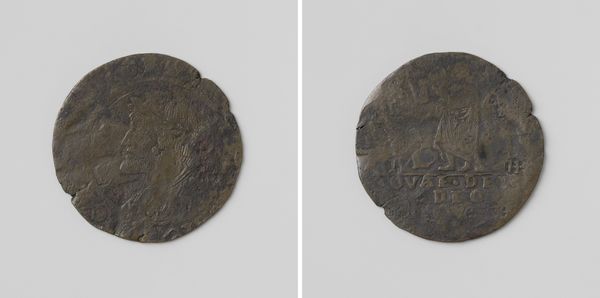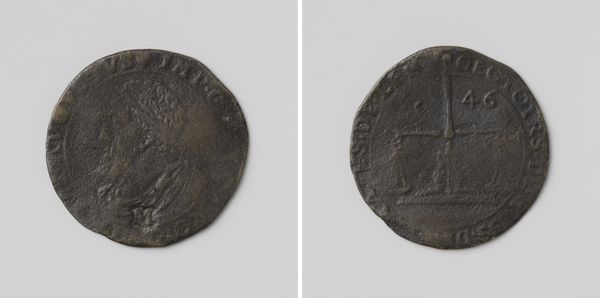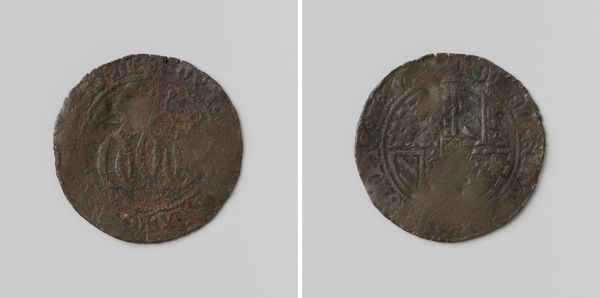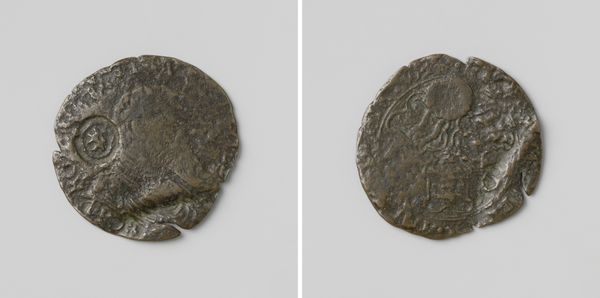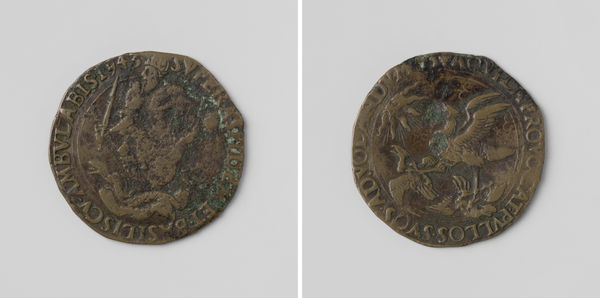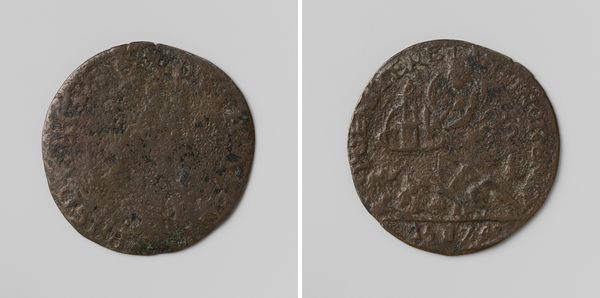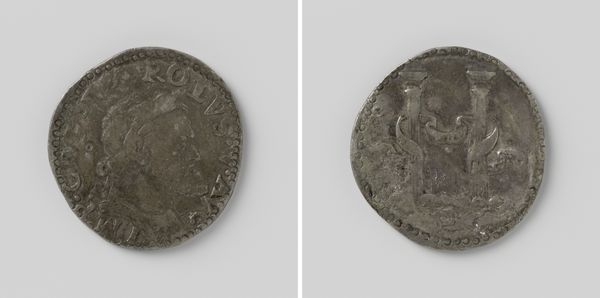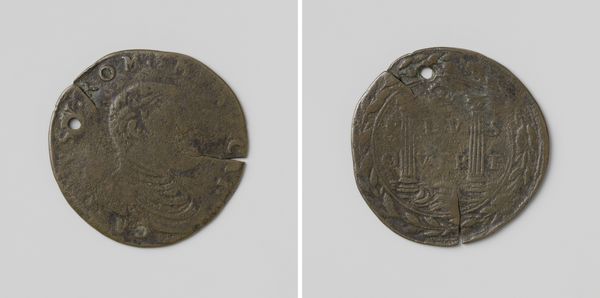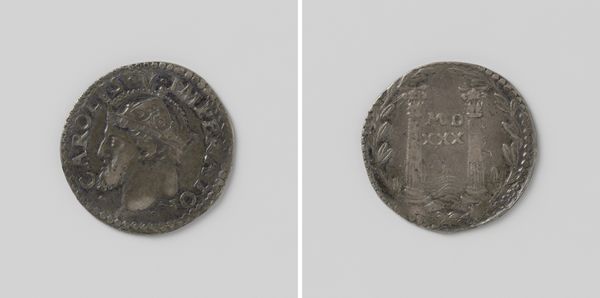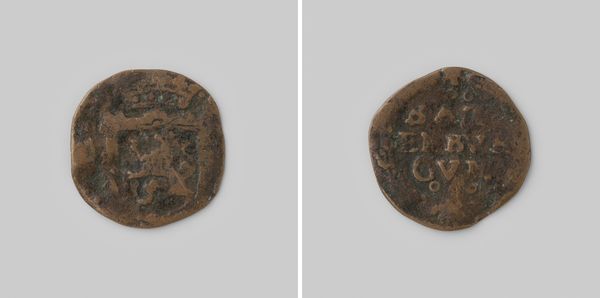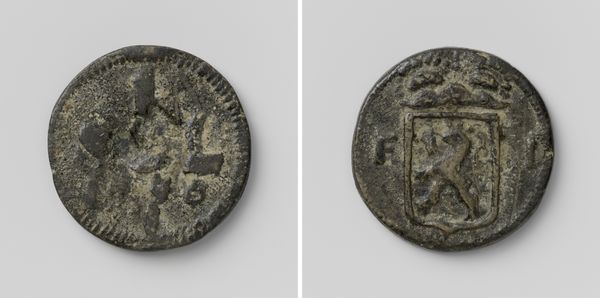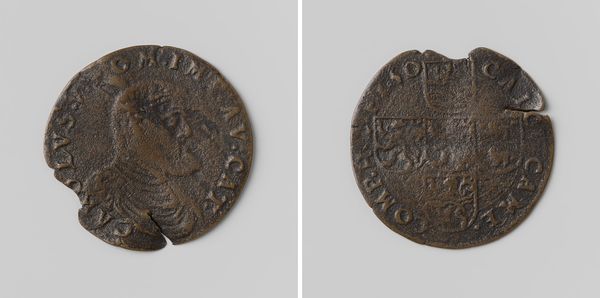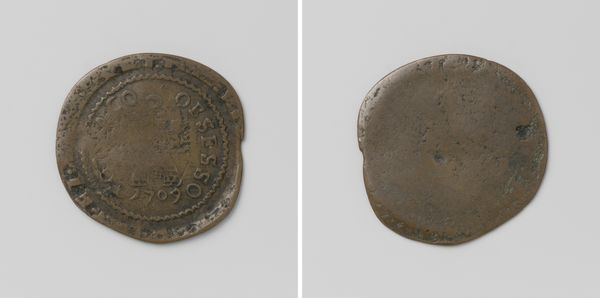
metal, sculpture
#
portrait
#
medieval
#
metal
#
sculpture
#
ancient-mediterranean
#
sculpture
#
history-painting
Dimensions: diameter 2.8 cm, weight 3.58 gr
Copyright: Rijks Museum: Open Domain
Curator: Let's discuss this intriguing object: "Vigilance of Charles V, Holy Roman Emperor," dating from 1544. It’s an anonymous portrait rendered on metal and is part of the Rijksmuseum's collection. Editor: My first impression is its state of preservation, the patinas, and evidence of wear, a testament to its materiality, making its symbolic message of power even more resonant. It invites contemplation about its past utility, it almost seems to narrate a tale of global consumption. Curator: Indeed. When we think about the image of Charles V, we have to consider how images of powerful male rulers were often circulated. His reign impacted Europe deeply through war, colonialism, and religious conflict. What do you think that means for something intended for everyday circulation, even with the wear on it? Editor: Absolutely. By investigating production techniques and the nature of metals involved, such as the base material used in a low circulating coin, can tell us about wealth distribution during Charles' rule and trade routes and the circulation of money as an instrument of power. And what looks like wear might reflect processes intended to make Charles the V seem human... less like the ruler of the world he was. Curator: Yes, these representations weren’t just about showcasing power, they were trying to manufacture a very specific image and control perceptions in this time of change. There were very real anxieties around consolidating identity in an expanding world that impacted so much labor. Editor: Right, that mass production makes these sorts of images readily available for the state’s purpose of conveying Charles' idea of sovereignty, but for what purposes do other people in other countries have it for? Perhaps an investigation on global distribution can illuminate how Charles' global influence also changed labor practice for resource gathering. Curator: Viewing it through both lenses, we’re prompted to unpack a much wider narrative, recognizing it as not only a relic but a marker of identity. Editor: And considering its production and circulation, the piece raises awareness regarding economics that underlie Charles' place in history. We get a clearer picture of not just who he was, but what was made available and for what purpose.
Comments
No comments
Be the first to comment and join the conversation on the ultimate creative platform.
